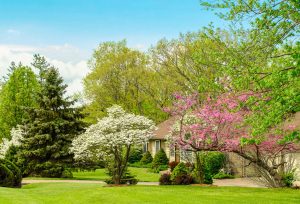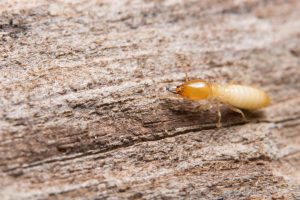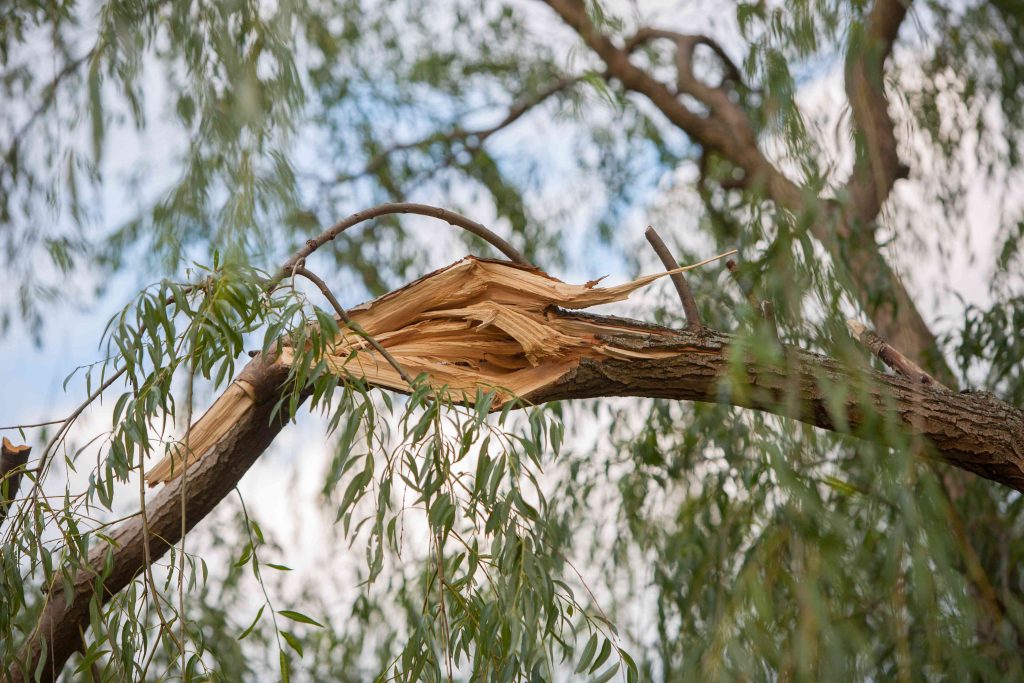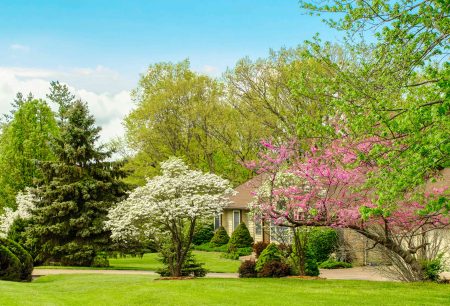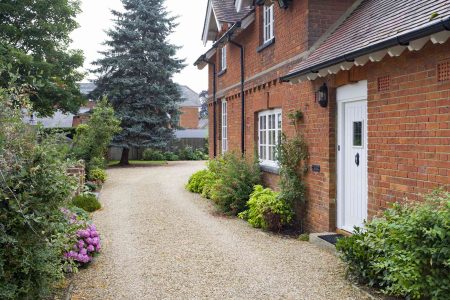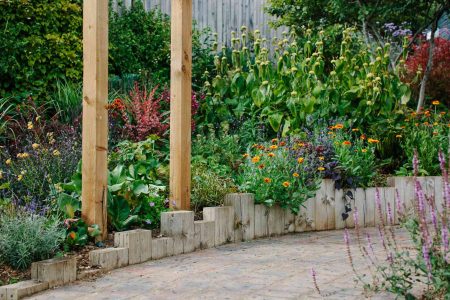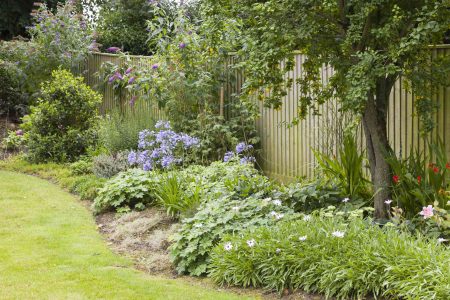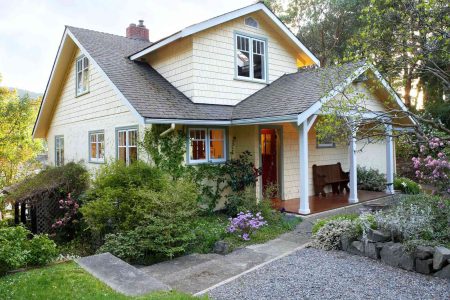There’s nothing like a well-placed tree to elevate your home’s curb appeal and provide shade, privacy, and structure to garden beds. However, some trees have invasive roots or weak limbs that are prone to breaking and commonly cause property damage when they’re planted near homes.
In the guide below, you’ll discover the top five trees to avoid planting near homes and office buildings, and learn which trees to plant instead.
Meet the Expert
- Alex Kasprzak is a certified arborist and owner of Elevated Tree Care tree removal and care services.
- Karen Manix is the co-owner of Walker Farm, a plant and tree nursery in Vermont.
- Kevin Cleveland is a certified arborist and the president of Tree Tech Inc.
Willow
Although they are visually stunning, it’s not a great idea to plant a willow tree next to your home.
“They have some of the most intrusive root systems, and their weak wood grain commonly causes branches to fail,” says Alex Kasprzak of Elevated Tree Care.
Their root systems mimic the look of their sprawling branches, and this can be a bad sign for any buildings planted nearby.
“That root system can damage your home’s foundation, or roots may tunnel into septic systems in search of more water,” says Karen Manix, co-owner of the Walker Farm plant and tree nursery.
Alternative: River Birch or Weeping Beech
Homeowners often choose willow trees due to their high water tolerance, but there are other water-loving trees to try. River birches, for instance, can handle wet areas, but their root systems are relatively shallow. Weeping beeches also have less aggressive roots and their trailing branches have all the charm of weeping willows.
Want more gardening tips? Sign up for our free gardening newsletter for our best growing tips, troubleshooting hacks, and more!
Bradford Pear
Bradford pears flower in spring and they’re commonly planted in gardens and along neighborhood streets. But these trees aren’t recommended by tree pros for proximity to buildings.
“Bradford pears have poor branch structures, which makes them highly susceptible to limb failure,” says Kasprzak. “Their roots are mildly intrusive too.”
Keeping Bradford pears away from your home can help you avoid some potential issues, but growing them at all can be tricky because they are considered invasive. Even when they’re planted in gardens, Bradford pear trees can escape into the wild and cause issues for native plants and wildlife. Avoiding these trees all together is the best way to limit their spread.
Alternative: Serviceberry or Eastern Redbud
Instead of growing invasive Bradford pears, look for native flowering trees like serviceberry or eastern redbud. These trees both provide food and shelter for native wildlife, and they look just as pretty as Bradford pears when they bloom in spring.
Silver or Norway Maple
Maple trees have a stunning disposition, and there’s nothing more beautiful than watching their leaves turn in the fall. However, you have to be careful about which type you choose, lest you threaten your home with burrowing roots or falling branches.
“Of the all members of the maple family, silver maples have the most intrusive roots,” warns Kasprzak. “They also have a fast growth rate that leads to weak branch attachments and increases the likelihood of fallen limbs.”
Aside from silver maples, it’s also a good idea to avoid planting Norway maples. Like Bradford pears, Norway maples grow invasively in many areas and they can outcompete sugar maples and other native trees.
Alternative: Red or Sugar Maple
Red maples and sugar maples have a similar look to silver and Norway maples, but they pose fewer risks for homeowners. Not only are these trees native to North America, but red maples delight with fiery red autumn foliage and sugar maples are the best trees for maple sugaring.
Ash
Ash trees have a stately look and a dense canopy of leaves that supports an assortment of wildlife. But these trees are on the decline in many areas due to invasive emerald ash borers. These small, green beetles lay their eggs on ash tree bark and can cause even large trees to die in just a few years.
“With the heavy infestation of emerald ash borers, it’s no longer advisable to plant ash trees,” says president of Tree Tech Inc. Kevin Cleveland. “If you do plant them, they’ll need immediate and consistent treatment to survive.”
Alternative: Birch or Oak
While emerald ash borers do a lot of damage, they generally aren’t interested in trees outside of the ash family. Birch and oak trees are usually safe from these voracious beetles, and have a similar look and feel to ash trees.
Black Walnut
Aside from willows and Bradford pears, Kasprzak had one last tree on his avoid list: black walnuts.
“Branch failure is also common with these trees, and their roots are more invasive than most other deciduous trees,” says Kasprzak.
Black walnut trees also release a toxic substance, known as juglone, into the soil, which keeps other plants from competing with black walnuts for space. Unfortunately, if juglone gets into your soil, it can make it hard to grow other ornamentals, and even interfere with the growth of edible crops like tomatoes.
Alternative: Black Cherry or Staghorn Sumac
The compound leaves of black cherries and staghorn sumacs have a similar look to black walnut tree leaves. However, these native plants don’t release juglone into the soil, and they attract finches and other wild birds.
Read the full article here


